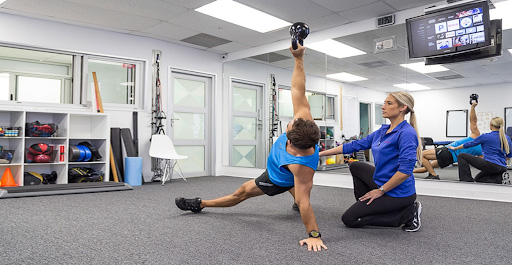Strength Training in Physical Therapy
Strength training is an essential part of your physical therapy treatment. It can help you recover your strength, prevent injuries, and enhance your overall physical function. If you’re undergoing physical therapy, it’s important to understand how strength training can improve your condition.
Firstly, your physical therapist will identify your specific needs. We will asses your current level of strength and any muscle imbalances or weaknesses. We will then work with you to determine your goals for rehabilitation based on your medical history and any limitations you may have.
Once your specific needs have been determined, your physical therapist will select the appropriate exercises that target to support the specific areas. Depending on your condition and goals, the physical therapist may recommend exercises that focus on specific muscles or joints. For example, if you have a knee injury, your therapist may recommend exercises that strengthen the hips, quadriceps, and lower extremity muscles.

Strength Training Benefits in Physical Therapy
To guide the rehabilitation process, your therapist will gradually progress you. You will go from neuromuscular recruitment of proper muscle tissues to progressed strengthening and power building. Your therapist will gradually increase the intensity of your exercises. They will start with low resistance and gradually increase it. This prevents injury and allow your muscles to adapt to the exercise. This is called progressive overload and it is used to improve muscle adaptations of strength, endurance and power.
Progressive overload training:
Progressive overload training is a specific principle used in PT that involves gradually increasing the demands on your muscles. It can be achieved by progressively adding more weight, increasing repetitions or sets. It can also be achieved by making exercises more challenging, or increasing workout frequency. By continually challenging your body, and slowly increasing overall work volume, progressive overload stimulates muscle growth, increases strength, and improves speed of rehabilitation. It’s important to apply progressive overload in a controlled manner. Start with manageable increases and maintaining proper form to avoid injury.
One-Rep Maximum (1RM) Percentages:
1RM percentages are a way to determine how much weight you should lift during strength training based on your maximum strength. When you’re doing physical therapy to recover from an injury, we as therapists use these percentages to help you regain strength gradually without over-straining your muscles. We start with lighter weights, approximately 30-50% of what you can lift at your strongest, in order to stimulate neuromuscular recruitment of muscles to allow for introduction to progressive overload. As we increase the resistance or load to higher percentages (60-80% range), we decrease the number of repetitions performed, which help to increase hypertrophy (growth of the specific muscle) and strength. This helps your muscles adapt and recover safely.
Strengthening through full ranges of motion to improve overall mobility assists with joint health and longevity. To strengthen through new ranges of motion we increase the range of motion through joint mobilization, dynamic stretches and flexibility training to increase available ROM. Now we are ready to start increasing the range of strength during exercises, using props or incremental adjustments. We would then include stability, strength and balance exercises to enhance control after the range has been gained.
Proper Facilitation of Strength Training

To properly promote strength training and rehabilitation, the therapist must reduce all poor movement patterns. This is to allow for proper muscle recruitment. Proper form is essential in strength training to ensure that the correct muscles are being targeted and to reduce the risk of injury. Improper form due to lack of attention and detail can lead to progressed injury and longer rehabilitation times. Here at Symmetry Physical Therapy, we work 1 on 1 with all patients to allow for improved outcomes, faster healing and rehab process and an improved treatment plan for your situation.
A variety of therapeutic exercises are used in the overall progression of your plan of care. This may include different exercises, variations of exercises, or increasing resistance. Your therapist will work with you to determine the appropriate amount of variety for your rehabilitation.
Strength training is a crucial part of your physical therapy treatment. It can help you recover your strength, prevent injuries, and enhance your overall physical function. By working with your physical therapist to identify your specific needs, selecting the appropriate exercises, gradually increasing resistance, focusing on proper form, and incorporating variety, you can achieve your rehabilitation goals and improve your overall health and wellbeing. Do you live in the Miami or Brickell area and are looking for a Physical Therapist? Come see us at Symmetry Physical Therapy! We provide an in-depth assessment and treatment strategies so we can help you return to a pain free lifestyle.
Feel free to give us a call at (305) 331 2277 to schedule an appointment.
